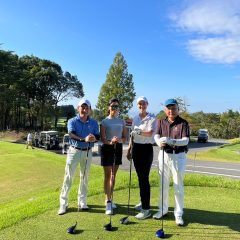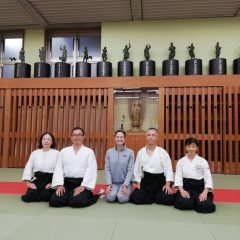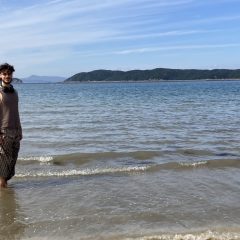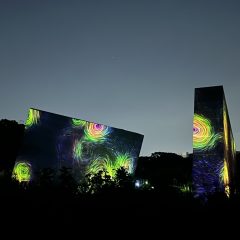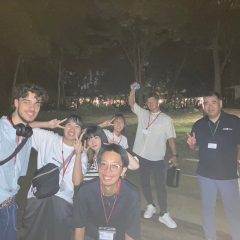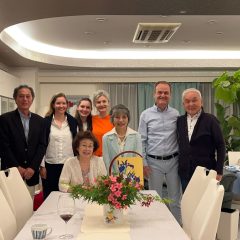☆☆☆ Third report from Christina Neumayer, twentieth scholar of the Grünwald foundation ☆☆☆
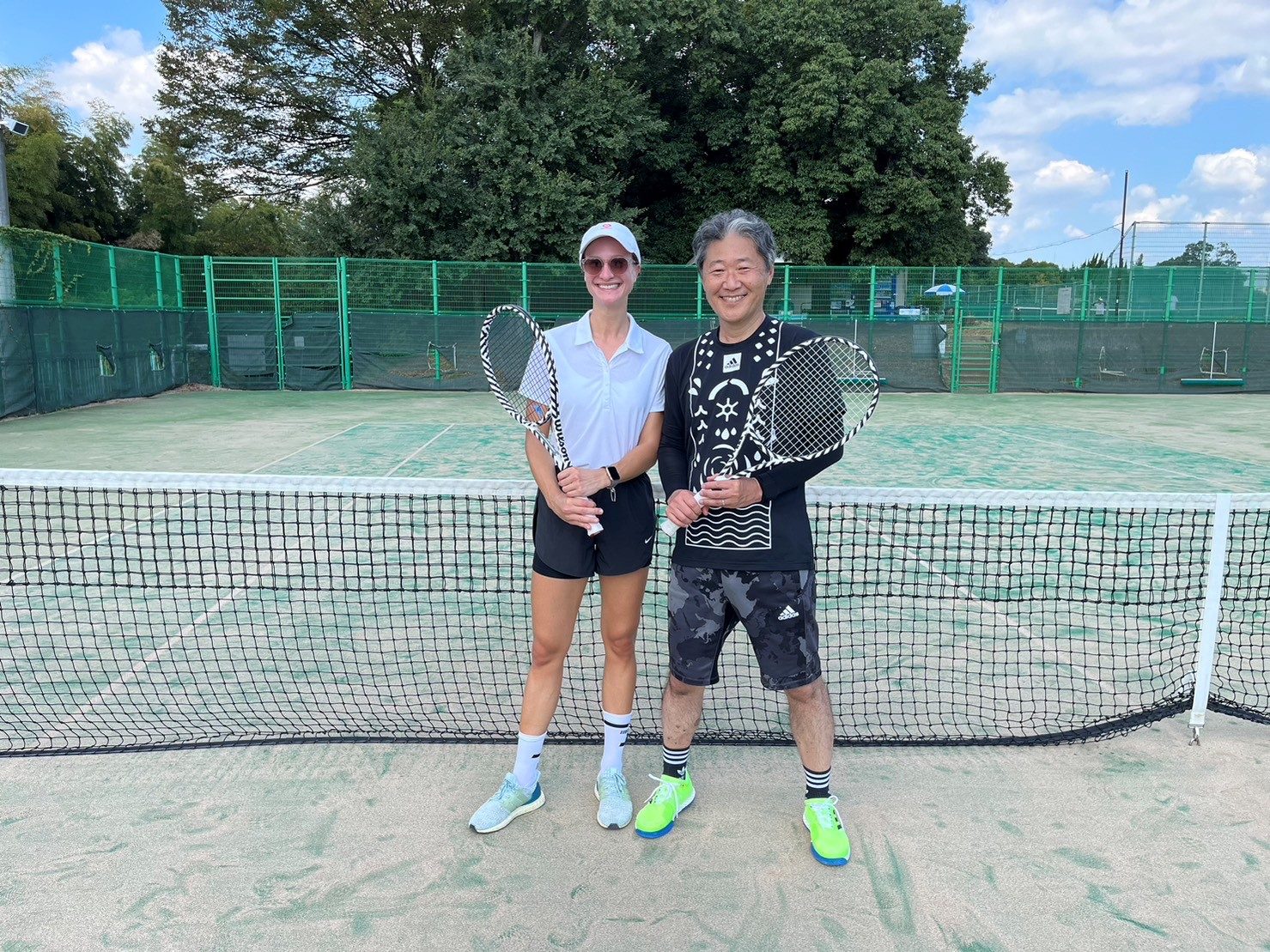
The first month passed by in no time and after I had already played on every golf course in Japan, I decided to try and play all the tennis courts in Japan in October. Therefore, I got to know more people and the mayor of Suita even invited me to a match. Also, I was playing a doubles tournament in Akashi together with Takto, one of my Japanese friends. Here, too, I enjoyed the hospitality of the Japanese and their great interest in me. We communicated through gestures and facial expressions, and Google Translate also helped at one point or another. In any case, the time spent together on the tennis court was always very nice and I often felt as if we were all one big family – no matter if I had only known the people for an hour. In general, I always enjoy doing sports in foreign countries with foreign people. This is because I believe that sport brings people together: they understand each other, even if they don’t speak the same language, and they pursue one goal: to have fun with each other and leave the worries of everyday life and the events in the world aside for a minute.

Tennis with mayor
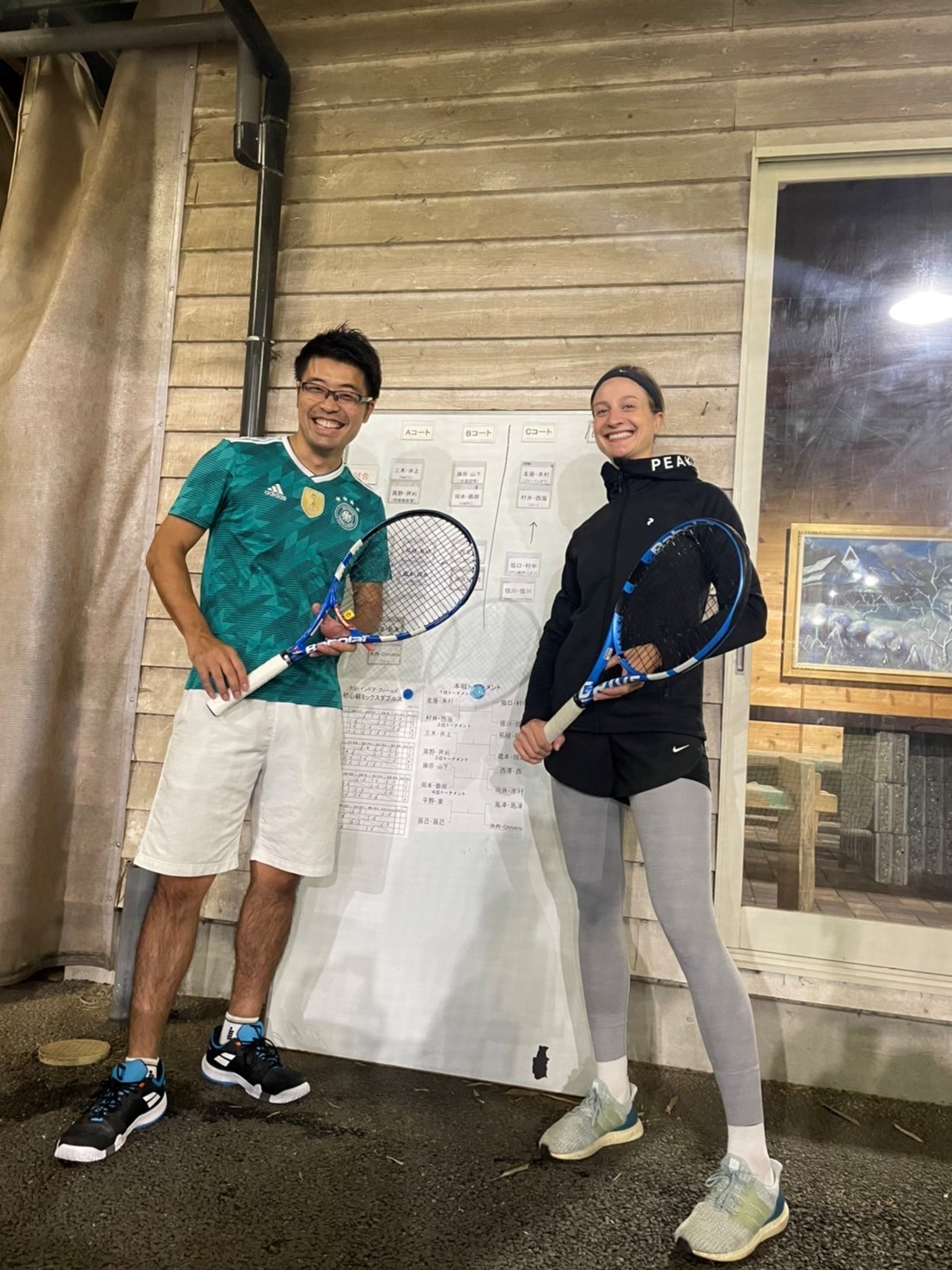
Double-tournament with Takto
Starting this month, I also finally have language lessons. I’m excited about that, because life in Japan is much easier if you know a bit of Japanese. However, the first 90 minutes felt like 2 weeks, as we discussed the complete Hiragana and Katakana characters and learned to introduce ourselves in Japanese… For information: The Japanese alphabet consists mainly of three different alphabets: the two syllabic alphabets Hiragana and Katakana and the Kanji characters, which originate from China. Hiragana and Katakana each consist of just under 50 “letters” or syllables, with Hiragana being used for native Japanese words and Katakana for non-traditional Japanese words. So I learned 100 new characters right away – to warm up – and was happy when I could recognize and “read” these characters when I was on the move.

The new university semester also started in October, so thanks to Mr Aochi (German teacher at Kyoto Prefecture University (KPU)) I was introduced to some students with whom I ate Japanese sweets such as warabimochi (a jelly-like Japanese sweet in the form of small dumplings, the main ingredients are starch from bracken, water and sugar as well as soy flour), kakigori (a Japanese water ice with syrup, milk and the red bean paste anko) or matcha cake. Mr Aochi also invited me to his home for a special, traditional Japanese dinner in his own temple. I met his wife, son, daughter-in-law and grandchild and felt very welcomed as well.
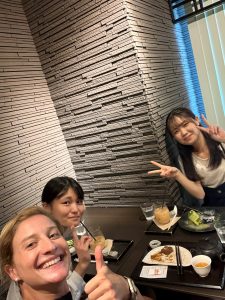

With Mr. Aochi
I also used the regular trips to Kyoto to get to know the city even better and to “live” it. So I took an Ikebana course, visited the Kinkakuji Temple, the Arashiyama Bamboo Forest as well as the garden of Tenryu-ji and the ruins of the Kotokiki Bridge. Ikebana (Japanese 生け花 also いけばな, literally “living flowers”) is the Japanese art of flower arranging and is considered as an expression of aesthetics. It has been around since the 7th century, and over the centuries distinct schools of ikebana have developed, each differing in their use of various techniques and materials. The Kinkakuji Temple, also known as the “Golden Pavilion”, has been a UNESCO World Heritage Site since 1994. It “owes” its name, which means “temple fire”, to the temple fire of 1950.
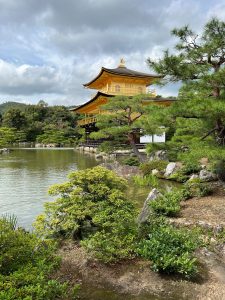
In search of more UNESCO World Heritage Sites, I visited Himeji Castle together with Mr Bessho, which was built in 1601 (at the beginning of the Edo period) by Ikeda Terumasa and marks the beginning of a new era, an era without war. This is also the reason why the castle is white (traditionally, Japanese castles have been wood-coloured) – it symbolises new times. What further makes the castle very unique is the fact that it survived the Second World War unscathed and even remained intact despite a century earthquake (1995). A legend says that even an open bottle of sake remained on the altar in the castle, while the entire Hyogo Prefecture was severely damaged by the quake…. So it is not surprising that the castle is the first UNESCO World Heritage Site in Japan (since 1993).
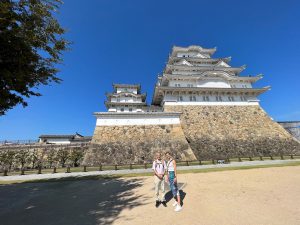
Schloss Himeji with Mr. Bessho
Mr Bessho and I ended the day by having dinner together with Mr and Mrs Okamoto. We had fugu (puffer fish), a typical Japanese speciality. In Japan, eating fugu is considered an important cultural asset and a luxurious food at the same time. We ate fugu skin (cooked), fugu sashimi and finally fugu simmered in a sumo pot. A very delicious and guaranteed unique experience, which I am very grateful for. Finally, Mr Bessho invited me to a 2-hour karaoke session – because, according to Mr Bessho, singing keeps you fresh, young and healthy – so of course I’m happy to join in 😊
I also made another trip to Kobe to visit Mrs. Ikawa, but this time not to hold German lessons, but to cook curry rice together with the Catholic community for a total of 90 people in need and then distribute it. It was a very special feeling to cook with such friendly and committed people and afterwards hand over the food to the needy people and put a smile on their faces. The appetite was great and the food was very well received, so that we were able to give some people another okawari (second portion).
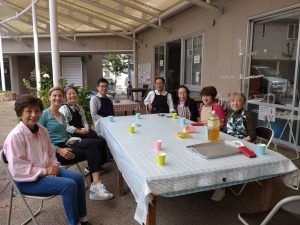
Cooking (Kobe)
I also used the time to explore the area around Osaka. Together with my friends Toshi, Alina, Elena and Takto, I went to Wakayama (south of Osaka). We visited the port of Kada and hiked to the Miyama Gun Battery site – a weapons depot from the Second World War. We also took an onsen bath (hot, natural spring bath) at Kyukamura Kishu Kada. This was my first onsen and we enjoyed a great view over the ocean. The onsen was one whose water was tainted with sodium bicarbonate (Tanzan suiso en-sen) – but in total there are 10 different types of onsen, the most famous being iou-sen with sulphur (from volcanic activity).

Wakayama
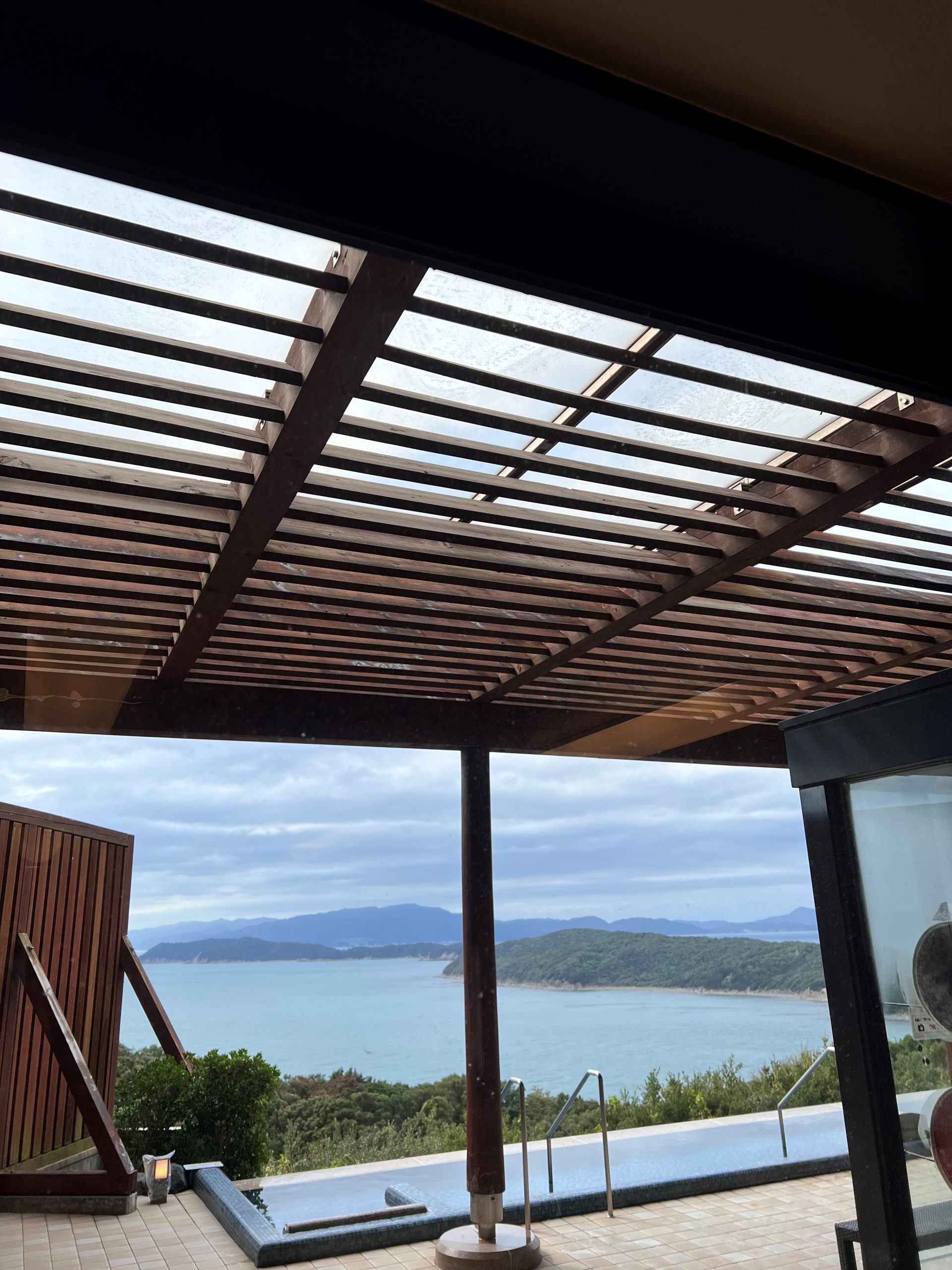
Onsen
Mr Okamoto also brought me to Miyama (north of Kyoto in the mountains). The village is known for its thatched roofs (kayabuki) and its beautiful location in the countryside. There is a lot of agriculture around and I like to experience a Japanese village with old, traditional houses and farmers tending their fields. We continued through the mountains to Mount Kurama. Passing the sacred Kibune River, we reached a three-part temple, the Kifune Shrine (Main, Yui o Yashiro and Okunomiya) and continued to Kurama-dera Temple on top of Mount Kurama. Special here: the temple belonged to the Tendai sect (subordination of the Shoren-in) from the 12th century until 1949. Then a separate religious direction was established – founded by the Jianzhen discipline. On this day, I felt a unique spirituality and magic of the places and I believe I will not experience such an authentic Japan in its silence and authenticity again soon.
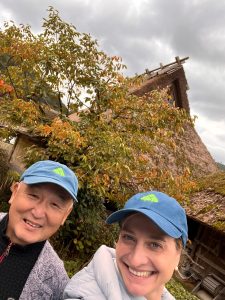
Lastly, I used the unscheduled time to continue exploring the city of Osaka. Thanks to some very nice people whom I got to know through regular meetings of the German-Japanese Society or similar events, I was never alone. Elena and I visited the Teamlab art installation in Osaka, for example. TeamLab (since 2001) is an international art collective, an interdisciplinary group of artists, programmers, engineers, CG animators, mathematicians and architects whose collaborations address the interaction of art, science and technology with the natural world. In the city’s botanical garden, there are several light and image installations that come to life in nature and with the influence of us humans.
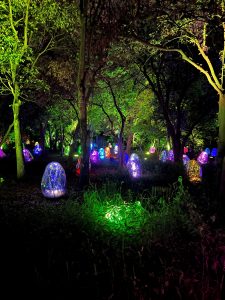
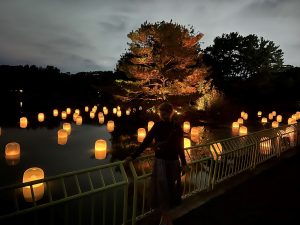
Maki, Hokoshi, Franz and I visited the Cupnoodle Museum in Osaka, Ikeda, the birthplace of instant noodles. On August 25, 1958, Momofuku Ando (1910 – 2007) developed the world’s first instant noodles (chicken ramen) in this area, and they are still sold today under the Nissin Foods company brand. We were even allowed to design our own noodle cup and fill it with various toppings.
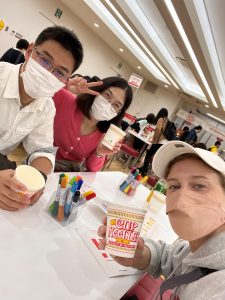
I was also invited to accompany Mr. and Mrs. Okamoto to an evening event with German wine & dinner. After listening to German songs, we had a beer. Of course, “ein Prosit” was not missing and we all toasted with “1,2,3 Gsuffa!”. Together with a wine tasting, we had some German food: asparagus (in September (?)) with Hollandaise sauce, Schweinshaxe, Frankfurter Würstel and Baumkuchen. Baumkuchen has been very famous and popular in Japan since 1919, thanks to the German confectioner Karl Joseph Wilhelm Juchheim – a sweet connection between the two cultures.
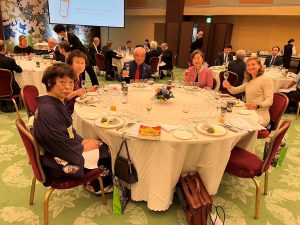
I was also invited to a reception for German Unity Day at the Conrad Hotel in Osaka. At this event, I had the opportunity to talk to some interesting representatives from business, culture and various educational institutions.
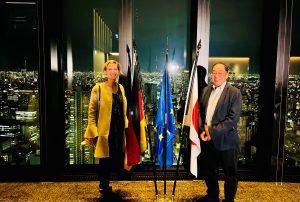
With Tosh Minora
The first half of my stay is already over and I am looking forward to the next 6 weeks full of experiences and new acquaintances. The time in Japan, with so many unique opportunities, is a wonderful gift and I realise every day how grateful I am to Mr Okamoto and the Grünwald Foundation for this oppotunity.

